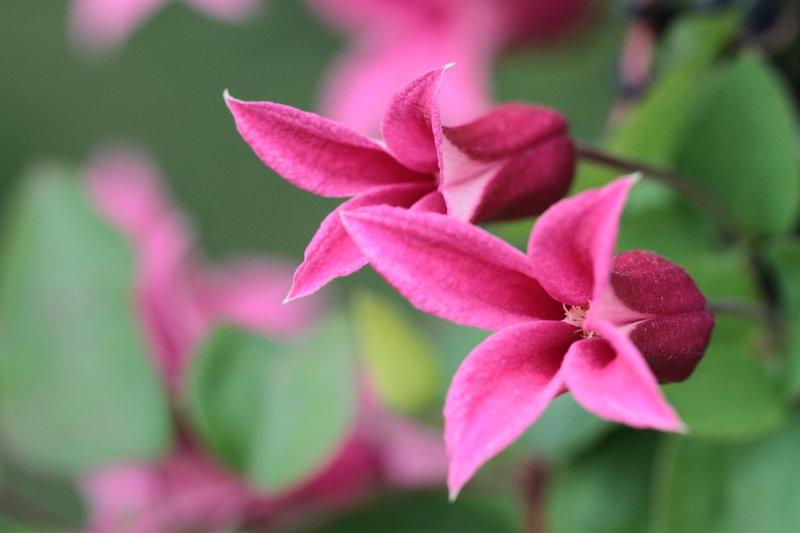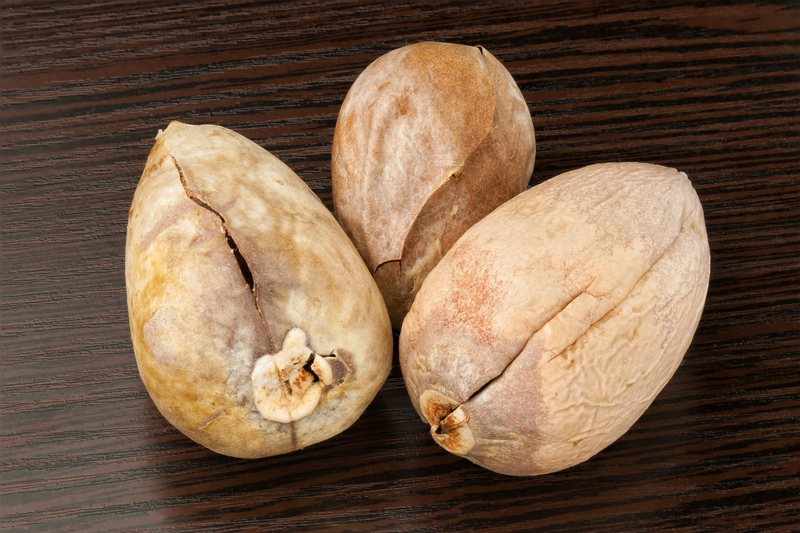Materials and Design Tips for a Kid-Centric Garden
Posted on 15/09/2025
Materials and Design Tips for a Kid-Centric Garden
Creating a kid-centric garden is a rewarding way to cultivate children's love for nature while ensuring a safe and stimulating environment for play and discovery. Whether you are transforming a small backyard or a large outdoor space, selecting the right materials and employing practical design tips is key. This article explores various kid-friendly gardening materials and provides comprehensive design advice to help you craft a beautiful, safe, and engaging children's garden.
Why Design a Kid-Focused Garden?
A kid-focused garden goes beyond aesthetics; it serves as an educational, entertaining, and relaxing space tailored to spark curiosity and creativity in young minds. Garden-based learning can enhance sensory development, responsibility, and environmental stewardship. Plus, a child-friendly outdoor space provides endless opportunities for active play, relaxation, and family bonding.
Benefits of a Kid-Centric Garden
- Physical activity: Encourages movement, play, and exercise
- Imagination and creativity: Offers spaces for imaginative play and exploration
- Social development: Supports group games and family interactions
- Learning: Teaches about nature, plants, and sustainability
- Therapeutic effects: Nature can help reduce stress and promote well-being

Essential Materials for a Child-Friendly Garden
Choosing appropriate garden materials for kids is essential to ensure both safety and durability. Here's a rundown of the top kid-safe materials for both landscaping and outfitting your family garden:
Soft Ground Coverings
- Artificial grass: Soft, easy to maintain, and ideal for play areas. It prevents mud and cushions falls.
- Rubber mulch: Provides a cushioned, non-toxic surface suitable for swings and climbing frames.
- Bark chips: Natural feel and soft to walk or fall on, but ensure they're splinter-free and untreated.
- Eco-friendly play mats: Foam or recycled rubber mats can define play zones.
- Low-growing groundcovers: Plants like clover and creeping thyme tolerate foot traffic and are pollinator-friendly.
Safe, Sustainable Hardscaping
- Natural stone: Smooth, non-slip stones for paths and patios. Choose rounded edges for safety.
- Composite decking: Splinter-free and slip-resistant, composite materials are durable and environmentally friendly.
- Brick or pavers: Set flush with the ground to prevent tripping hazards.
- Untreated wood: Use for raised beds or edging, ensuring surfaces are smooth and sanded.
Child-Friendly Plant Choices
- Non-toxic plants: Avoid plants that are poisonous or have thorny, spiky, or irritating foliage. Opt for herbs, sunflowers, pumpkins, snapdragons, sweet peas, and strawberries.
- Touchable textures: Plants like lamb's ear, grasses, and soft mosses enhance the sensory garden experience.
- Colorful blooms: Bright flowers attract pollinators and delight kids--think marigolds, nasturtiums, and zinnias.
- Edible plants: Blueberries, cherry tomatoes, and peas are great for hands-on learning and snack-time in the garden.
Eco-Friendly and Durable Furniture
- Weatherproof tables and chairs: For crafts, picnics, and games.
- Natural log stools: Perfect for rustic seating and storytelling corners.
- Kid-sized benches: Ensure they're sturdy, stable, and splinter-free.
- Sun canopies and shade sails: Use UV-resistant, breathable fabrics to provide shelter.
Smart Design Tips for a Kid-Centric Backyard Garden
A thoughtfully designed child-friendly garden incorporates elements that stimulate the senses, foster creativity, and guarantee peace of mind for caretakers. Here's how to maximize both fun and safety:
1. Prioritize Safety
- Enclose the space: Use safe, attractive fencing or living hedges to define boundaries and keep kids within sight.
- Opt for non-toxic materials: Always check material and plant safety before inclusion.
- Check for hazards: Regularly inspect for sharp edges, splinters, and potential tripping hazards.
- Sun safety: Install shaded zones for protection during peak sun hours.
- Ensure visibility: Maintain clear sight lines from seating areas to all parts of the garden.
2. Create Zones for Different Activities
Divide your kid-oriented outdoor space into zones to encourage various types of play and exploration:
- Active play area: Swings, climbing structures, or balance beams using child-safe construction.
- Quiet zone: Cozy nooks with benches, beanbags, or reading tents.
- Gardening beds: Raised or ground-level plots where kids can plant and tend flowers, herbs, and vegetables.
- Water play station: Sand and water tables, mini ponds, or a gentle mister (ensure constant supervision with water features).
- Wildlife corner: Bug hotels, bird feeders, or a butterfly garden to encourage nature observation.
3. Embrace Sensory and Educational Elements
Children learn best when all their senses are engaged. Incorporate elements that appeal to touch, sound, sight, and smell:
- Sensory path: Alternate mulch, pebbles, stepping stones, and grass underfoot.
- Wind chimes or musical walls: Use recycled materials for creative, interactive sounds.
- Fragrant plants: Lavender, mint, and basil help connect kids to the smells of the garden.
- Colorful art: Paint garden markers, stepping stones, or fence panels in bright hues.
4. Design for Easy Maintenance
- Choose hardy plants: Select species that can withstand rough play and minimal watering.
- Simplify watering: Drip irrigation systems or soaker hoses reduce chore time.
- Clear garden beds: Use raised beds or defined plots to reduce trampling.
- Low-mess features: Artificial turf or bark prevent mud and erosion.
5. Encourage Creativity and Interaction
- Chalkboard walls or easels: Create an outdoor art station that's washable and reusable.
- Fairy or dinosaur garden: Let kids create themed miniature gardens.
- Loose parts play: Provide natural elements like stones, sticks, and pinecones for open-ended construction.
- Build-it-yourself features: Let older children help assemble raised beds, birdhouses, or compost bins under supervision.
Choosing Kid-Safe and Eco-Friendly Materials
When shopping for landscaping and play equipment, look for certifications or labels that indicate eco-friendliness and safety. Materials for children's play areas should be:
- Certified non-toxic: Check for standards such as ASTM, EN71, or FSC.
- Free from sharp edges: All wooden or metal features should be properly finished.
- Weatherproof and UV-resistant: Especially important for plastics and fabrics.
- Sustainably sourced: Prioritize recycled, reclaimed, or sustainably harvested wood and plastics.
Popular Eco-Friendly Material Choices for Kid Gardens
- Bamboo: Renewable, strong, and splinter-free for fencing or trellises.
- Recycled plastic lumber: Durable, easy to clean, and splinter-resistant for play structures and seating.
- Reclaimed wood: Look for untreated and sanded woods for natural aesthetics.
- Cork tiles: Soft, natural, and great for pathways.
- Native stone: Blends seamlessly with the landscape and provides a sturdy base for paths and gathering spots.
Designing for Different Ages and Abilities
One of the hallmarks of an effective kid-friendly garden design is adaptability. If you have children of different ages and abilities, consider these tips:
For Toddlers
- Fenced play areas: Secure containment for peace of mind.
- Soft, level surfaces: Prevent bumps and facilitate crawling or first steps.
- Low-height features: Accessible sand tables and sensory elements.
For School-Age Kids
- Challenging play equipment: Swings, monkey bars, and climbing walls with proper safety surfacing.
- Garden beds for planting: Let children take ownership of their patch of soil.
- Spaces for games: Areas for soccer, tag, or hopscotch.
For Children with Special Needs
- Wide, level paths: Wheelchair- or walker-friendly surfacing.
- Raised beds: Easy access for gardening at different heights.
- Sensory-rich features: Soft textures, gentle sounds, and calming water elements.
Incorporating Wildlife and Nature into Your Kid's Garden
Connecting children with wildlife enhances understanding of local ecosystems and animals. Some easy and safe wildlife-friendly garden additions include:
- Butterfly gardens: Plant milkweed, lavender, or zinnias to attract pollinators.
- Bird feeders and baths: Mount out of direct reach, but within viewing distance.
- Bug hotels: Piles of bamboo, sticks, and pine cones create safe insect habitats.
- Logs and rocks: Provide good hiding spots for frogs, beetles, and lizards.
Maintenance and Upkeep: Keeping Your Kid-Centric Garden Safe and Beautiful
Routine upkeep not only preserves the beauty of your children's garden space, but also ensures ongoing safety. Remember to:
- Inspect play equipment and surfaces: Check for loose bolts, damaged edges, or worn materials.
- Remove toxic plants: Regularly survey your space for new or invasive unsafe plant growth.
- Sanitize surfaces: Wipe down play equipment, tables, and outdoor toys on a regular basis.
- Weed and mulch garden beds: Keeps the area tidy and healthy for plants and children alike.

Inspiring Ideas: Extra Fun Features for a Kid-Centric Garden
- Mud kitchen: Dedicated area with old pots, pans, and utensils for sensory play.
- Storytelling circle: Logs or cushions around a central "fire pit" (real or pretend) for group story times.
- Interactive art wall: Pegboards or easels for ever-changing creative masterpieces.
- Treasure hunt trails: Use stones, shells, or painted markers to create winding paths.
- Nature observation station: Weatherproof journals, magnifying glasses, or binoculars for exploring micro-wonders in the garden.
Conclusion: Growing More than Just Plants
Designing and building a kid-centric garden is about growing more than greenery. With the right garden materials for kids and thoughtful child-focused planning, you create a welcoming, engaging, and safe space that encourages healthy growth, exploration, and joy. Start small or go grand; what matters most is the lasting memories, valuable lessons, and love of nature your garden will nurture in young hearts.
Are you ready to transform your outdoor space with a kid-centered garden design? With these materials and design tips, you'll soon enjoy a garden as cherished as it is child-friendly--where the imagination can bloom as readily as the flowers.

